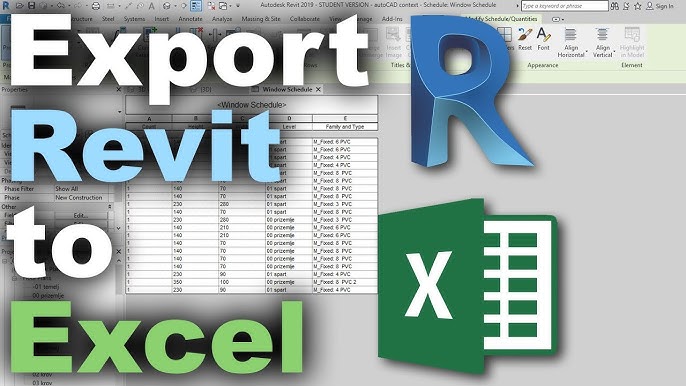Opening New Capabilities: Improve Revit Tools with the Right Plugins
Wiki Article
Mastering the Art of Data Integration: How to Seamlessly Import Excel Files Into Revit
In this post, we will certainly direct you via the procedure of understanding the art of data assimilation. Obtain all set to prepare your Excel data easily and follow our step-by-step guide to import data right into Revit. With our finest practices, you'll achieve data integration success in no time.Comprehending the Importance of Data Integration in Revit
Recognizing the significance of information assimilation in Revit is crucial for seamless importing of Excel documents. When you integrate information from Excel right into Revit, it allows you to efficiently handle and update info throughout the entire job. This combination ensures that your design and construction procedure is up-to-date and exact.By integrating data, you can quickly import and upgrade criteria, timetables, and even geometry in Revit. This eliminates the requirement for manual information access, conserving you time and minimizing the threat of mistakes. With Revit's data combination capabilities, you can maintain consistency and precision in your project, while additionally boosting collaboration amongst staff member.

Exploring the Excel File Style for Revit Integration

In order to effectively integrate Excel files right into Revit, it is vital to make sure that the information is formatted correctly. This includes properly identifying rows and columns, along with structuring the data in such a way that works with Revit's information schema. Revit uses details parameters and categories to arrange data, so it is essential to straighten the Excel information with these specifications to guarantee a smooth integration.
In addition, it is necessary to note that Revit just sustains certain data kinds when importing from Excel. These consist of message, numbers, and days. Any other data kinds, such as solutions or conditional formatting, will certainly not be identified by Revit and may cause issues during the integration procedure.
Preparing Your Excel Information for Seamless Import Into Revit
To guarantee a smooth combination process, you'll need to properly style and label the columns and rows in your Excel data prior to importing it into Revit. Begin by analyzing your Excel data and determining which rows and columns contain relevant info for your Revit project.Following, make certain that the data in each column is properly formatted. For example, if you have a column for dimensions, make certain that all dimensions are continually formatted in the very same units of dimension. Revit depends on consistent formatting to accurately interpret and import information.
In addition, it is essential to check for any type of empty cells or incongruities in your data. Revit might not be able to read or import data from cells that are empty or consist of mistakes. As a result, it is recommended to evaluate your Excel data and tidy up any type of disparities before importing it into Revit.
Step-By-Step Overview to Importing Excel Files Into Revit
As soon as you have actually correctly formatted and labeled your Excel information, you can easily import it into Revit by following this step-by-step guide. To start, open Revit and navigate to the "Insert" tab. Click on "Import CAD" and choose "Import Excel" from the dropdown food selection. A new home window will show up, asking you to situate the Excel documents you want to import. Search your computer system and pick the Excel documents, after that click "Open."Next, a dialog box will certainly show up, allowing you to tailor the import settings. Below, you can select the worksheet you desire to import, define the variety of cells to import, and select the suitable units for your information. When you have actually made your options, click "OK" to continue.
Revit will certainly currently present a sneak peek of your Excel information. Take a moment to review the sneak peek and guarantee that everything looks proper. If required, you can make changes to the import setups by clicking on the "Setups" button.
Finest Practices for Data Combination Success in Revit
Make certain you adhere to these best techniques to make certain effective assimilation of information in Revit. First and foremost, it is revit tool essential to organize your data in Excel prior to importing it into Revit. This means ensuring consistent naming conventions, correct formatting, and exact information depiction. Next off, make usage of Revit's built-in devices for information mapping. This will permit you to match the columns in your Excel documents with the corresponding criteria in Revit. Bear in mind the devices and information types when mapping the data, as any kind of disparities can lead to errors in the combination process.One more crucial method is to on a regular basis validate and upgrade your data. Additionally, make use of data validation devices within Revit to recognize any kind of errors or disparities in the incorporated information.
Last but not least, it is suggested to develop a clear workflow for data combination. This includes specifying duties and duties, establishing an interaction network in between staff member, and establishing a regular tempo for data updates and evaluations. By complying with these best techniques, you can make sure a successful and seamless combination of data in Revit, inevitably enhancing the effectiveness and precision of your job.
Conclusion
To conclude, understanding the art of information combination is essential for smooth import of Excel submits into Revit. Understanding the significance of data integration in Revit is the initial step towards successful combination. Discovering the Excel documents format for Revit integration helps in recognizing the restrictions and demands. Preparing the Excel information effectively and following a step-by-step guide is vital for a smooth import procedure. By complying with ideal techniques, you can make certain information integration success in Revit and make the most out of your project.When importing information from Excel right into Revit, it is crucial to comprehend the data format and just how it can influence the combination process (revit plugins). Revit uses specific criteria and groups to arrange data, so it is important to straighten the Excel information with these specifications to guarantee a seamless assimilation
Be conscious of the information and devices kinds when mapping the data, as any disparities can lead to mistakes in the integration procedure.
Furthermore, make use of information recognition tools within Revit to recognize any type of errors or incongruities in the incorporated data.

Report this wiki page